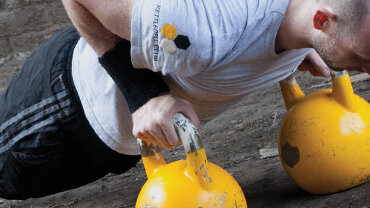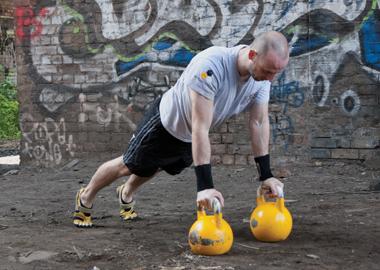Unlucky Workout
Beginners / Intermediate / Advanced Level
Unlucky is a workout that contains four simple kettlebell exercises. A selection of exercises that appear in many kettlebell based workouts. As popular and simple as the exercises are it’s the sheer volume of work that you get through that makes this workout a challenge. On top of a good amount of strength endurance you will also need to show some mental aptitude to grind your way through it. The workout covers all levels of ability but the fitter and stronger you are the better. Make sure you warm-up fully before proceeding with this workout.
INstruction
13 Rounds for Time
Goblet Squats x 13 reps
Push-Ups x 13 reps
Double Crunches x 13 reps
Two Hand Swings x 13 reps
Unluckily for you there is no time limit on this workout, you just have to get through it as quickly as you can, maintaining perfect form. The idea is that you perform 13 reps on all the exercises back to back with little to no rest in-between. After the Two Hand Swings you want to reset and start back at the Goblet Squats. You have 13 rounds in total to get through so don’t go too hard straight away. The key is to keep a steady pace all the way through. Set a timer and make a note of your rounds as you work your way through.
NOTE: The Push-Ups don’t need to be performed on two kettlebells, you can just do these as regular Push-Ups on the floor. If you struggle with the amount of reps, regress the exercise to your needs. The same applies to the other exercises. If you start to struggle with form, switch the exercises to their bodyweight variations (except for the Swings).













